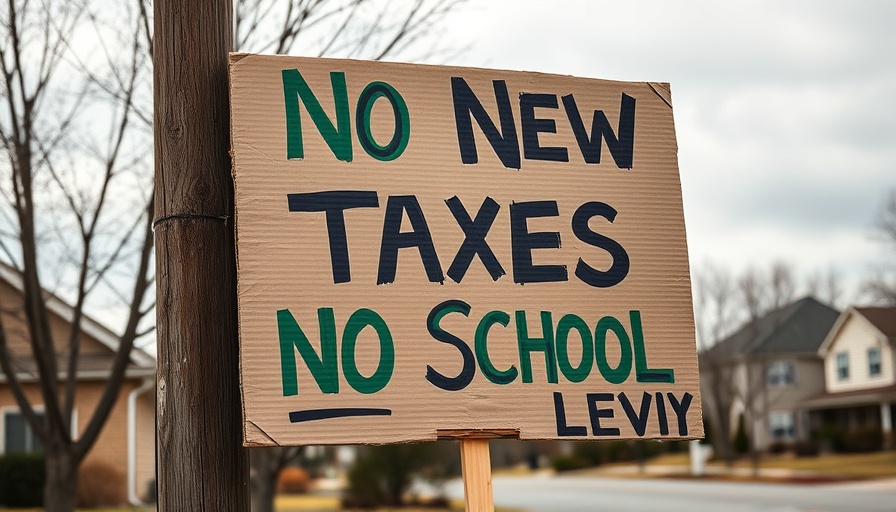
Understanding the School Levy Landscape in Ohio
Ohio's educational funding landscape is facing a tumultuous chapter as numerous school levies were rejected during the May 6 primary ballot. The fallout of these defeats has sparked a passionate debate about the role of the state government in funding public education, with parties starkly divided over approaches and responsibilities. While local voters may have spoken, the implications of such decisions echo through the halls of Ohio’s schools.
Why Did So Many Levies Fail?
Despite 70% of school levies being approved throughout Ohio, many others were defeated, particularly in regions like Northeast Ohio. The widespread failure raises questions about local priorities and the overarching issue of school funding. House Minority Leader Allison Russo highlights that the rejection of these levies reflects a larger issue in public finance, saying, "we are so overlevied because the state does not step up to do its part on many issues, most importantly in the space of public education." This dissatisfaction stems from decades-long struggles and demands for sustainable funding solutions.
The Historical Context of Ohio's School Funding
The roots of the current school funding crisis can be traced back to a landmark Ohio Supreme Court ruling in 1997, which found that the state’s reliance on property taxes was unconstitutional. Over the years, myriad approaches have been attempted to rectify this imbalance, culminating in the bipartisan Cupp-Patterson Fair School Funding Plan enacted in 2021. However, current funding proposals have fallen short, leading to frustrations from educators and advocates.
Funding Gaps and the Future of Public Education
This year’s budget proposed by House Speaker Matt Huffman has slashed expected school funding by hundreds of millions of dollars. Educators argue that the amount allocated is critically below what is needed to meet the standards set by the Fair School Funding Plan—approximately $666 million. Instead, the proposed funding is around $226 million, raising alarms about the sustainability of public education moving forward.
Voter Reticence and Its Impacts
As GOP leaders affirm that local decisions must silhouette state actions, there's concern about the long-term consequences on education. “A levy doesn't pass because the local voters, the constituents, don't want it to pass—that's up for the local jurisdiction to make a decision,” Huffman mentioned. While this respect for local governance is laudable, it places a heavy burden on communities already struggling financially.
Addressing Local and State Responsibilities
This conversation invites us to ponder: what is the true role of the state in education funding? The ongoing tension between local decision-making and state responsibility poses significant challenges. With residents already grappling with rising taxes, the idea of passing school levies necessitates a broader dialogue about community investment in education. Perhaps, an informed community that feels its contributions benefit the greater good might be more amenable to supporting levies.
Looking Forward: The Need for Collaboration
As Ohio navigates this complex scenario, it will be vital for all stakeholders—educators, parents, and lawmakers—to engage in meaningful conversations about public school funding. By moving toward actionable solutions, the state and local jurisdictions can work together to ensure that educational institutions are adequately financed and subsequently capable of delivering quality education. The heart of this issue lies in fostering a community-first mindset, where the focus remains on empowering the next generation.
In conclusion, while the recent ballot outcomes signal a reluctance to approve new taxes, they also underscore the necessity for open dialogues about fair and equitable educational funding. If Ohio aspires to raise the standard of living for its future generations, embracing a more collaborative approach to funding education may be the first step.
By understanding the nuances of the current school levy landscape and actively participating in this conversation, residents have the potential to invoke meaningful change in the state's education system. It's time to advocate, discuss, and support the public schools that play such a crucial role in our communities.
 Add Row
Add Row  Add
Add 




 Add Row
Add Row  Add
Add 








Write A Comment